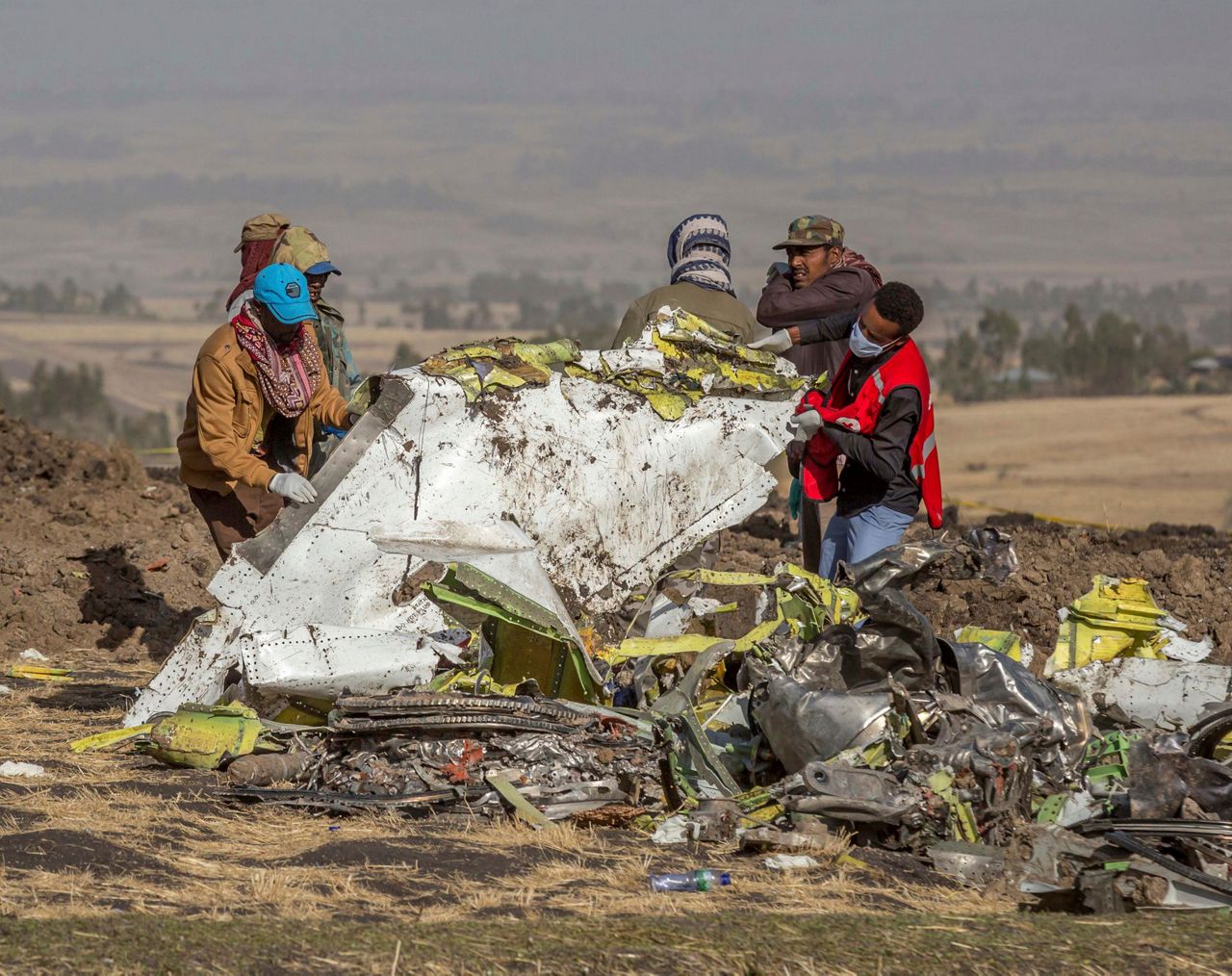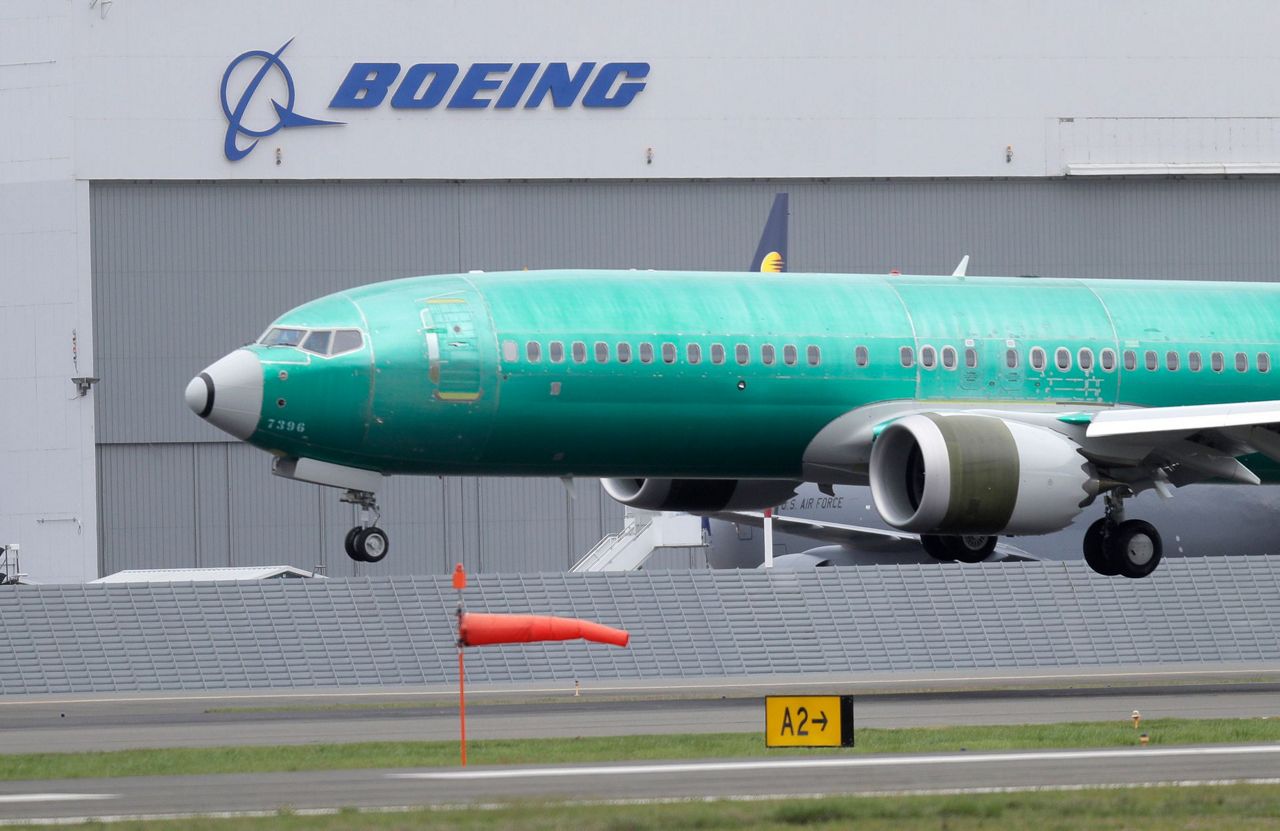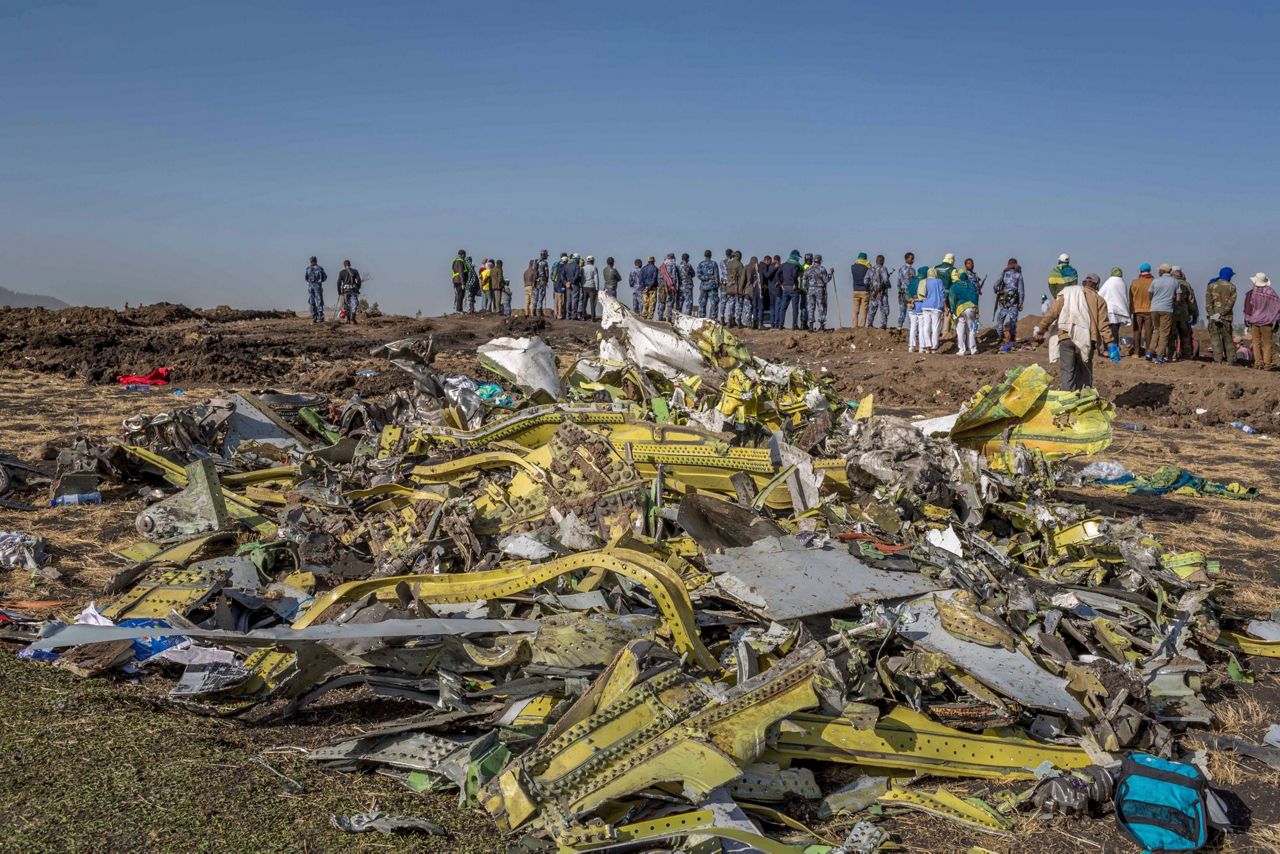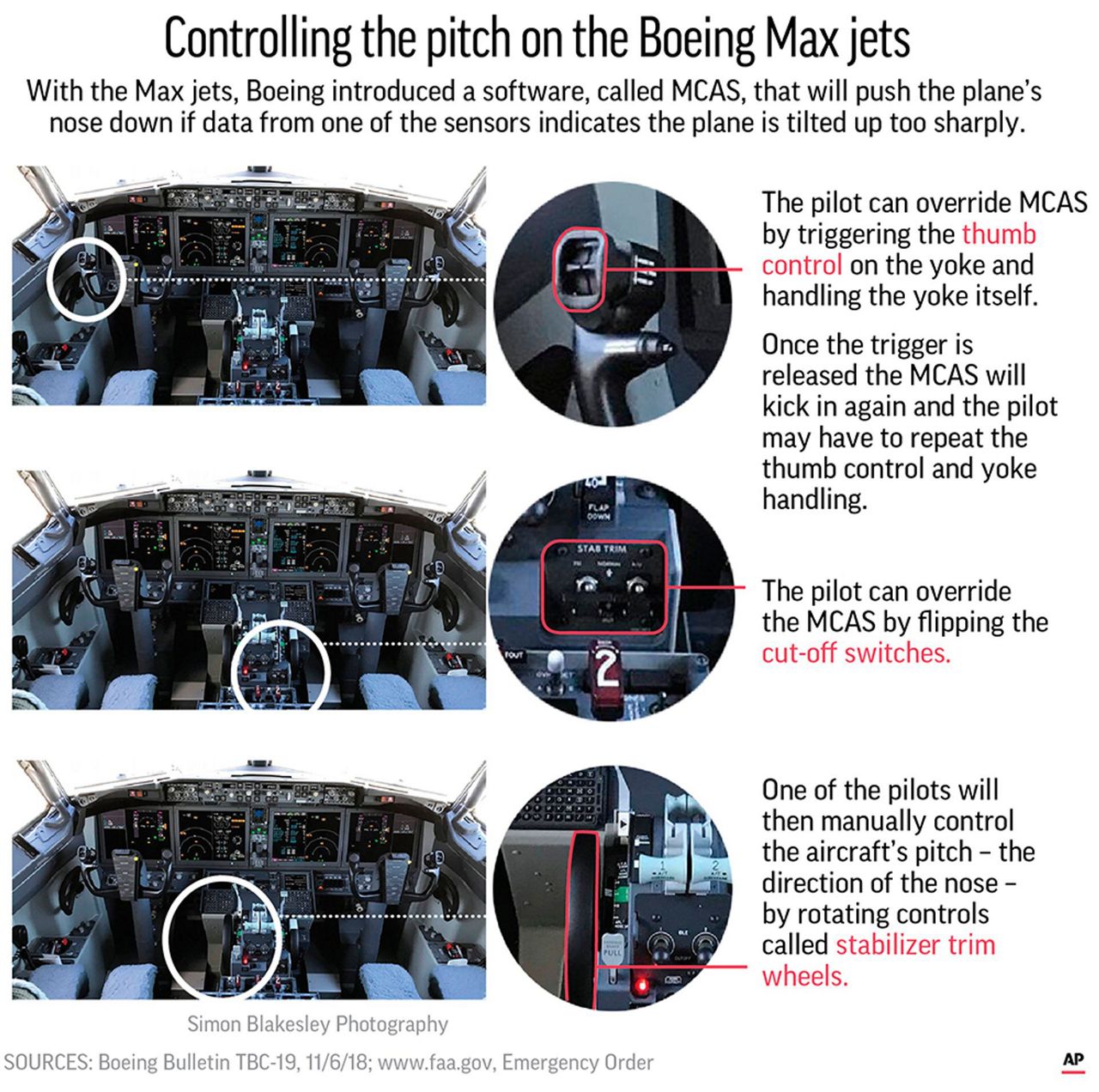NEW YORK (AP) — Just days after a Lion Air Boeing 737 Max nosedived in Indonesia and killed all 189 people aboard, an Ethiopian Airlines pilot began pleading with his bosses for more training on the Max, warning that crews could easily be overwhelmed in a crisis and that one of their planes could be the next to go down.
"We are asking for trouble," veteran pilot Bernd Kai von Hoesslin wrote in a December email obtained by The Associated Press, adding that if several alarms go off in the cockpit at once, "it will be a crash for sure."
That prediction proved all too accurate.
What Ethiopian Airlines did in response to his warnings is unclear, and whether it made any difference is a matter of dispute. But within weeks, an Ethiopian Max indeed went down, killing all 157 people on board. It slammed into the ground amid a flurry of alarms as the pilots struggled to control a malfunction in the automatic anti-stall system.
While the anti-stall system has gotten most of the scrutiny in the two Max crashes five months apart that have led to a worldwide grounding of the planes, the concerns raised by von Hoesslin have added to a debate on the role pilot error played, and whether Ethiopian's pilots were as prepared as they could have been to avert disaster.
Von Hoesslin, a Canadian citizen who resigned from Ethiopian last month, argued in three emails to senior managers after the anti-stall system came under scrutiny in the Lion Air crash that crews flying Ethiopian's five Max jets should have been given more information and training on how the system worked. He also said pilots should be drilled on the steps to override it if it faltered. Von Hoesslin's emails were first reported by Bloomberg.
The Max's system, called MCAS, for Maneuvering Characteristics Augmentation System, automatically pushes the plane's nose down when it is at risk of stalling. It misfired in both fatal crashes, with pilots losing control of the plane as they fought against it.
According to the email chain obtained by the AP, Ethiopian responded to the Oct. 29 Lion Air crash with a few emails to pilots detailing bulletins from the U.S. Federal Aviation Administration and Boeing on what do if the anti-stall system malfunctioned. Other Ethiopian pilots who spoke to the AP say those emails required no signoffs that pilots actually read and understood the directives, and no mandated additional training.
"Ethiopian Airlines is a rapidly expanding airline and they have extremely inexperienced crews," von Hoesslin said in documents obtained by the AP. "You need to spoon-feed them the information and make sure they understand."
To underscore his point, von Hoesslin made a video shortly after the Ethiopian crash in which he quizzed a Max pilot on a Boeing list of warning signs on the stall system that crew members were required to commit to memory. That video, obtained by AP, shows him going blank on most of it.
"You have to have confirmation that they opened it, that they read it and that they understood it," von Hoesslin said in a document obtained by the AP. "They should have done a little online test with 10 questions. You don't pass until you get the 10 questions."
Ethiopian Airlines tweeted Wednesday that "the source of these false allegations is a disgruntled former employee ... who has left the airline after many administrative problems."
Von Hoesslin's lawyer, Darryl Levitt, issued a statement saying the pilot was not fired but "resigned due to legitimate concerns he had raised that he felt were not adequately addressed." He added that von Hoesslin will be cooperating with regulators and authorities "with his sole objective of contributing to make air travel safe."
Ethiopian has said that the requirements for warning and training Max pilots after the Lion Air crash were set by the FAA and Boeing and that their directives were used to "brief all our pilots" and incorporated into flight manuals.
CEO Tewolde Gebremariam said in an interview shortly after the Ethiopian crash, "Today we believe that might not have been enough."
Gebremariam declined to say whether the pilots on the doomed flight took additional training after the Lion Air crash on Ethiopian's Max simulator, a multimillion-dollar piece of equipment most airlines don't have, but said "it wouldn't have made any difference" because the simulator wasn't designed to imitate problems in the new jet's flight-control system.
Ethiopian has said both the captain and co-pilot followed all the steps Boeing laid out in its bulletin on how to respond to a malfunction in the anti-stall system.
But the preliminary report on the March 10 crash of Ethiopian Airlines Flight 302 from Addis Ababa to Nairobi showed that the pilots deviated from the directives and made other mistakes, notably flying the plane at an unusually high speed and inexplicably reactivating the anti-stall system shortly after manually overriding it.
Six minutes into its flight, the plane with passengers from nearly a dozen countries cratered into the ground about 40 miles from the airport.
Former FAA Administrator Randy Babbitt said the Ethiopian pilots clearly bear some of the blame.
"So Boeing was at fault because a light came on or this thing tripped mistakenly, but it shouldn't have brought the airplane down," Babbitt said of the anti-stall system. "That was very fixable and a pretty simple solution. And they didn't come to grips with it. ... They let the plane get away from them."
Peter Lemme, a former Boeing engineer who worked on flight control systems, said apportioning blame between Boeing and the crew is difficult.
"Some pilots in their easy chairs are saying they would have known how to react, but it's not so easy," he said. "Did the pilots cause the accident? No. Could they have prevented it? Yes."
Von Hoesslin, a 56-year-old pilot with three decades of flying experience, initially wrote to his bosses Nov. 11 in response to the airline's five-sentence email to dozens of pilots alerting them to the Boeing bulletin and reminding them about the checklist of steps to perform should something similar go wrong.
He urged Ethiopian to give more information because pilots are not "fully or even aware of how" the MCAS works. That prompted a second email from the airline with more detail.
A month later, on Dec. 12, von Hoesslin sent another email, urging a close reading of a preliminary report from Indonesian regulators on the crash there. He pointed out several potential problems with the Max and recommended steps be taken to make sure pilots know the checklist.
The next day, he sent a third email recommending new simulator training designed to roughly re-create what went wrong in the Indonesian flight, adding that he had already practiced in a simulator rigged in such a way and his experience with all the alarms going off was frightening.
"Throw in a GPWS PULL UP" — a warning to pilots that the plane is in danger of crashing into the ground — "and it would be a crash for sure."
Boeing has said that its fix to software on the Max's anti-stall system will be accompanied by additional training for pilots. The acting chief of the FAA, Daniel Elwell, said last week that his agency hasn't decided whether that training should be conducted on computers or in flight simulators.
___
AP writer David Koenig in Dallas and researchers Jennifer Farrar, Randy Herschaft and Rhonda Shafner in New York contributed to this report.
Copyright 2019 The Associated Press. All rights reserved. This material may not be published, broadcast, rewritten or redistributed.






